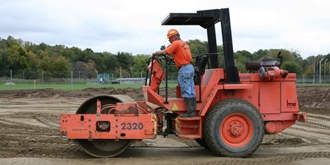Septic Ohio - Comprehensive Septic Tank Services in Ohio
Comprehensive Excavation Techniques: Understanding the Basics for Success
In the realm of construction and civil engineering, the value of efficient excavation techniques can not be overemphasized. The careful planning, exact implementation, and precise interest to detail called for in excavation tasks require a comprehensive technique that includes numerous fundamental aspects. From preliminary dirt analysis to the application of precaution and routine progress tracking, understanding these core elements is vital for attaining success in any type of excavation venture. The real mastery exists not just in comprehending these basics however in perfectly integrating them to navigate the complexities of excavation jobs with skill.
Recognizing Excavation Project Preparation

The initial stage of any type of excavation task is the planning phase, where crucial choices are made that can considerably impact the result of the job. Comprehending the job budget plan, extent, and timeline restraints is essential for developing a comprehensive excavation plan that ensures the job's success.
One trick aspect of excavation project planning is the advancement of a comprehensive timeline that outlines the sequence of target dates, landmarks, and activities. This timeline functions as a roadmap for the project group, allowing them to track progression and make essential changes to make sure the project remains on timetable. Furthermore, a well-defined budget that accounts for all expenses, including equipment rental, labor prices, and products, is necessary for preventing price overruns and delays. By meticulously taking into consideration all these elements throughout the preparation stage, excavation tasks can be carried out effectively and successfully, causing effective end results.
Soil Analysis and Site Analysis
Conducting comprehensive soil evaluation and website examination is an important step in the prep work phase of any kind of excavation job. Soil analysis includes establishing the composition, framework, and residential properties of the dirt at the excavation site. This information is vital for recognizing the dirt's bearing capability, dampness web content, and possibility for disintegration, which are vital consider establishing the excavation approaches and tools needed for the project.
Site assessment surpasses dirt analysis and encompasses a wider evaluation of the total website conditions. This assessment includes identifying any prospective hazards, such as underground utilities, ecological concerns, or unsteady terrain, that might affect the excavation process. By thoroughly reviewing the site, task supervisors can establish reliable excavation methods that focus on security, efficiency, and ecological security.
Utilizing advanced technologies like ground-penetrating radar, dirt tasting, and drone studies can boost the precision and effectiveness of soil analysis and site evaluation. Spending time and sources in these preliminary steps can ultimately conserve time and protect against expensive delays or issues throughout the excavation procedure.
Devices Selection and Application
Efficient excavation projects count heavily on tactical tools selection and utilization to make certain optimum performance and performance. Choosing the best equipment for the work is vital in optimizing efficiency and decreasing downtime. Aspects such as the kind of dirt, depth of excavation, and project extent play a substantial role in establishing the most suitable tools for the task handy.

Along with choosing the ideal tools, proper usage is vital to project success. Operators should be trained to deal with the devices securely and successfully - lancaster excavation. Regular maintenance checks and prompt fixings help avoid break downs and guarantee consistent efficiency throughout the task
Safety And Security Actions and Rules Conformity
In the world of excavation projects, focusing on safety and security actions and conformity with regulations is vital to making sure a legitimately audio and safe and secure functional environment. Precaution encompass a series of methods, including conducting thorough website analyses, executing proper signs and obstacles, and supplying sufficient safety training for all personnel involved in the excavation process. Adherence to policies, such as OSHA requirements in the United States, guarantees that the excavation job meets the essential requirements to protect employees, bystanders, and hop over to here the surrounding environment.

Monitoring Progress and Adjusting Approaches
How can project supervisors successfully track the improvement of excavation jobs and adapt their strategies accordingly to maximize results? Tracking progress is important for guaranteeing that excavation tasks remain on track and meet target dates. Task managers can utilize numerous tools and methods to track progress, such as day-to-day development reports, routine site evaluations, and advanced tracking technologies like drones and general practitioners tracking systems. By constantly keeping an eye on the task's development, managers can recognize any possible delays or concerns at an early stage and take proactive measures to resolve them.

Conclusion
In verdict, understanding the basics of comprehensive excavation approaches is vital for the success of any task. By understanding job planning, evaluating dirt and site problems, choosing proper tools, abiding by security regulations, and keeping an eye on progress, job supervisors can guarantee a efficient and smooth excavation procedure. Executing these approaches will result in successful results and lessen prospective risks or troubles during the excavation job.
The first stage of any excavation project is the preparation stage, where important decisions are made that can substantially influence the outcome of the job. Comprehending the task budget plan, timeline, and extent restraints is vital for creating a like this detailed excavation strategy that makes sure the project's success.
Just how can forecast supervisors efficiently track the development of excavation projects and adjust their methods as necessary to enhance end results? By carefully checking development and being ready to adjust methods, job supervisors can enhance the general success of excavation jobs.
By comprehending task planning, assessing dirt and website problems, choosing ideal devices, complying with safety regulations, and checking development, job managers can make certain a smooth and efficient excavation process.